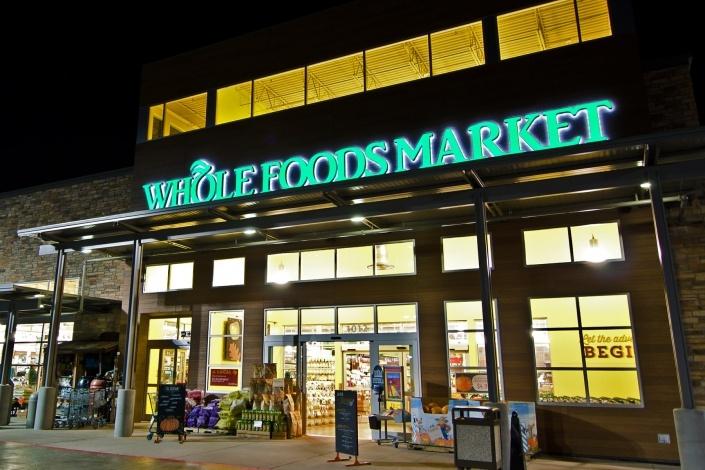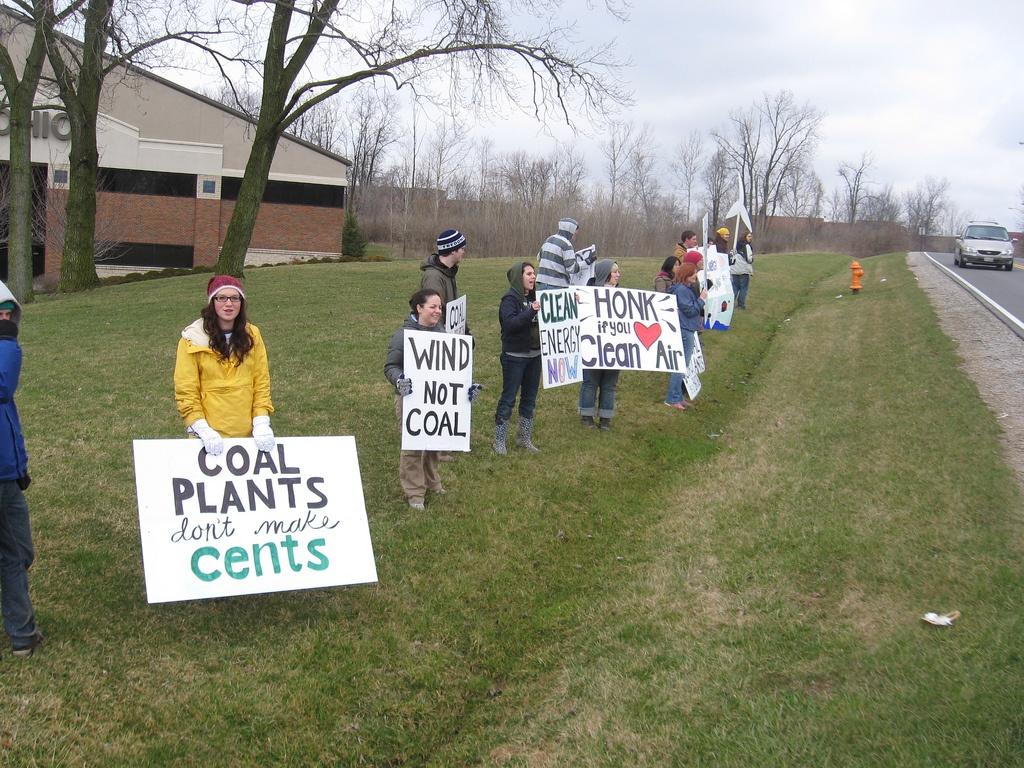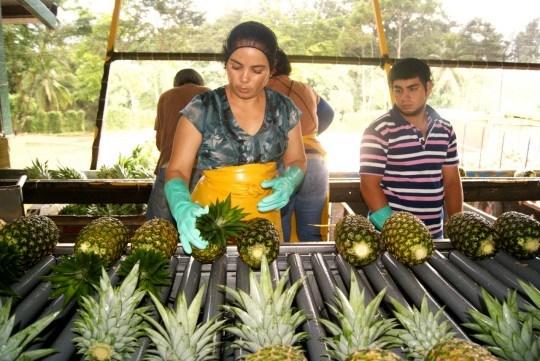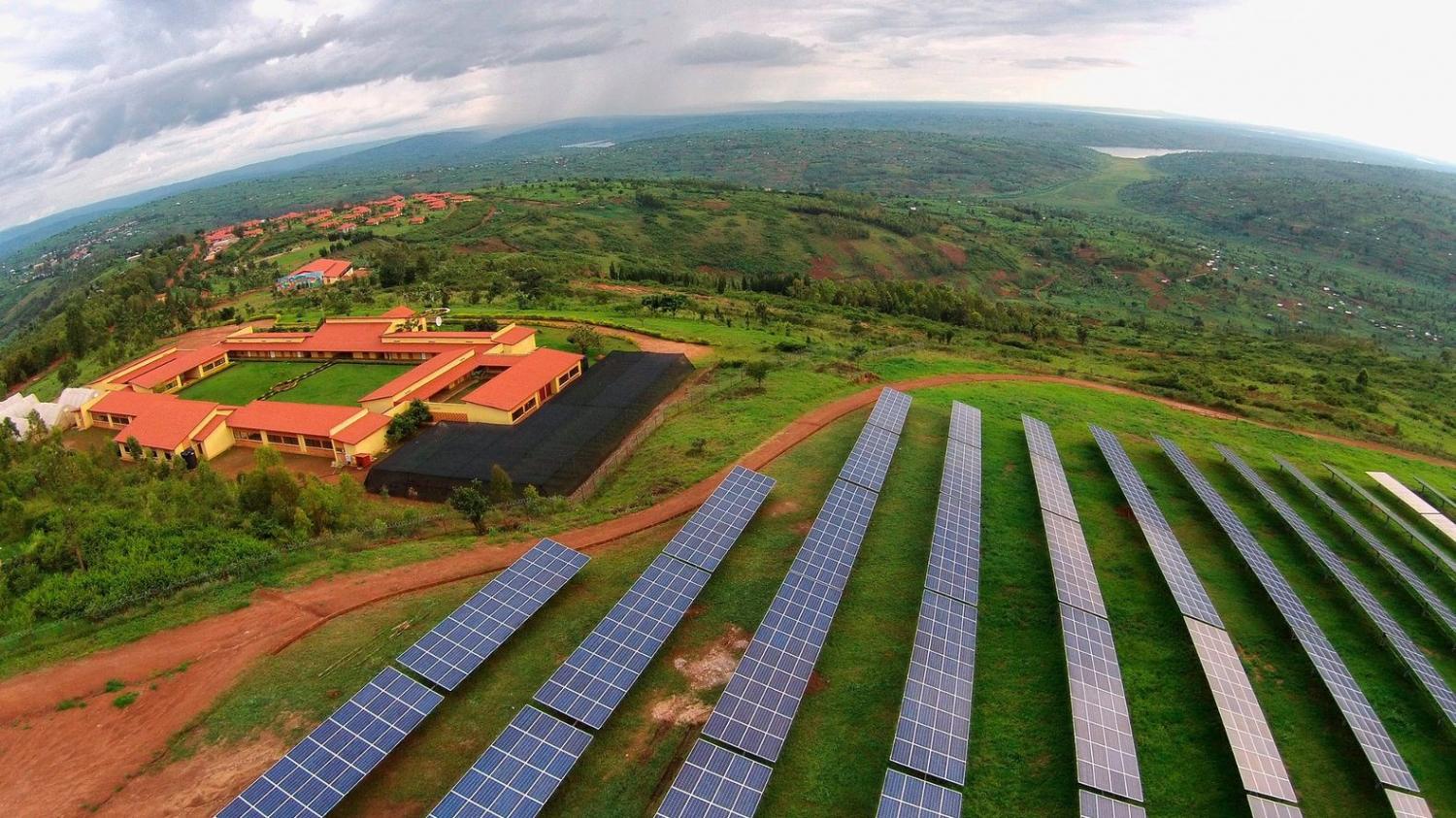8-Year-Old Girl Creates a Startup to Teach Kids to Code


Samaira isn't your normal techie. She doesn't work at Orbitz or Google (yet); she hasn't taken hours upon hours of classes on how to write code, repair a computer, or harness her patience when advising customers over the phone on how to operate their brand-new device.
But ask Samaira, who is just wrapping up third grade, what she really likes about coding, and you hear the words of a future techie who knows how to pique interest in even the most untrained neophyte.
"The one thing I really like [about coding] is the computer is interactive with us, too," says 8-year-old Samaira, founder of the board game and website Coderbunnyz.
Samaira has been working with coding for at least a year, and is now learning how to write Java. It's an interest that she owes largely to her engineer father, graphics-designer mother and unsuspecting 4-year-old brother, who she gave crash courses in coding after she caught the "programming bug" at age 7.
"The thing I actually like about coding is when you type it out, the computer actually is doing stuff. So the computer is smart, but at the same time, it’s not smart," she summarized, using the word "book" to prove her point. "If you spell B-U instead of B-O, it’s smart enough to know you’re writing B-U, but it isn’t smart enough to know you made a mistake. Your computer isn’t smart to know that it can fix it. So, what I really like ... is it will follow all of your directions."
Today, with more than 20 different workshops under her belt (all to kids about her age), and a beta-version board game that has more than 10 different levels by which to teach kids the concepts of coding, Samaira is pretty much in a league of her own. She has given demos and workshops all around the San Francisco Bay Area, often to standing-room-only groups of kids that clamor to try out her board game.
"Programming sounded so cool to me," Samaira remembers of when her dad first introduced it to her, figuring she probably wouldn't take to it. But she did, and the love affair is still growing. It's a love affair that she figures, ultimately, she can also use to help others as well.
"A lot of kids my age want to be an engineer, so I thought maybe if I teach coding, maybe they can learn to be an engineer," says the founder of Coderbunnyz, a website and blog named after her boardgame.
Asked whether she gets a chance to practice her skills in tech classes at school, Samaira admitted that her school isn't quite equipped to teach concepts like coding yet. In fact, according to Samaira and her dad, it's one of many examples of schools that don't teach coding due to resources, in part because school boards don't perceive it as a priority for their budgets.
"The school has started [teaching] computer labs to get kids to do some typing," says Samaira's dad, Rakesh Mehta. "But coding is more of logic and it requires more of real thinking, computational thinking" and that's something that schools in general haven't introduced.
As TriplePundit reported in our Tech Titans series last fall, only 1 in 4 schools surveyed in a 2014 Gallup poll commissioned by Google teach coding. At the same time, 9 in 10 parents surveyed want their kids to have the opportunity to learn coding and advanced computer skills, and feel it should be part of the curriculum. Yet less than half of the 11,558 superintendents and principals surveyed felt that their boards supported more computer science resources. And many "do not perceive a high level of demand for computer science among students and parents in their communities."
Meanwhile, countries like Finland, France, the United Kingdom and Estonia have either begun planning elementary school-level coding classes or have already integrated them into the curriculum, leaving the U.S. educational system behind in equipping future workers for what is already a burgeoning industry.
That disconnect in U.S. schools has given rise to a plethora of companies and organizations in this country that are trying to fill the gap with coding clubs, summer schools and other private resources that wedge the door open for girls and minorities. But it may not necessarily help kids like Samaira, who is self-driven and eager to use what she has learned in her everyday school classes -- where the incentive is there, but the resources aren't.
Experts are beginning to look at that question, however, Rakesh says. Both schools and educational game designers have already learned that kids pick up concepts well, when doing something fun and engaging. Language and educational websites like Quia.com capitalize on that idea by promoting learning and practice through interactive online games. Board games like Coderbunnyz do much the same because they have the "potential to (teach) how to get into the system and help kids to start learning some of those concepts. But in a fun way," Rakesh says.
Asked whether she plans to market Coderbunnyz for mass production, Samaira admitts that she's not sure because her first love is teaching the board game. "I just want to do is workshops and see how the kids like it. What I really want to do is make kids excited about coding and let their dreams come true of being an engineer or whatever they want to do. But anything is possible," she says. "Maybe one day, when one kid says I really, really want this, I will put it on Amazon or something like that."
Just the same, she's fairly realistic about what she is doing and what beginning coders need to know for the future.
As for Coderbunnyz, she says, kids need to remember: "You are not learning coding. You are only doing a board game."
And for kids -- small or very big -- who want to start that path on the way to becoming an engineer?
"I would want them to know coding is fun. Don’t feel stressed when you are doing coding. I mean, I have felt stressed when I have been doing coding. But if you’re calm, you will really like it."
Great advice for today's budding techies of all ages.
Images: Courtesy of Coderbunnyz
Oregon's 'Cowboy Campers' Face New Indictment Over Crimes of Violence


Ammon Bundy and his gang of armed thugs kicked off 2016 by invading Oregon's Malheur National Wildlife Refuge on Jan. 2. And now that they are behind bars, they are trying to position their violent acts as a case of legitimate civil disobedience by peaceful "cowboy campers." That's a stretch, to say the least. Few if any of the Bundy gang are actual cowboys in terms of occupational definition, and the pretense of civil disobedience was blown from the beginning by the gang's fixation with personal weaponry.
To underscore the point, a federal grand jury just handed down yet another in a series of felony indictments, this one nailing the group for possessing firearms in federal facilities, among other charges.
Another day, another Malheur indictment
For those of you new to the topic, TriplePundit has been following the Ammon Bundy Malheur episode in Oregon, and the fallout from another armed standoff spearheaded by Ammon's father Cliven Bundy in Nevada, because both of the men are business owners who purport to be acting on behalf of the community at large. However, from a corporate responsibility perspective, their actions are virtually nonsensical.
Ammon Bundy's takeover of the Malheur Refuge garnered no praise among the local stakeholder groups that he claimed to support. In the aftermath of the takeover, he and two dozen of his gang were arrested and indicted for impeding federal agents, among other initial charges. Almost all of them, including Ammon, have been held in jail without bail pending trial.
In the latest Malheur development, Reuters reported that a federal grand jury returned a new indictment on March 8 that piles on additional charges and defendants, too:
"The superseding indictment lists 26 defendants. Each is charged with the initial charge of conspiring to impede federal agents. It newly accuses some of the protesters of: possession of firearms and dangerous weapons in federal facilities, use and carry of a firearm in relation to a crime of violence, and depredation of government property."The latest Malheur indictment is available online, and one point of interest is that it covers incidents as far back as November 2015. The new Malheur indictment also indicates that more legal action can be expected in the future:
"Beginning on or about November 2015, defendants and conspirators recruited and encouraged other individuals, known and unknown to the grand jury, in person and through social media and other mean of communication, to participate and assist in the above-described conspiracy," the indictment reads."In or about November 2015 continuing through January 26, 2016, defendants and conspirators traveled to Harney County, Oregon, to intimidate and coerce the population of Harney County, Oregon, in order to effectuate the goals of the conspiracy.
"Beginning on January 2, 2016, defendants and conspirators occupied the Malheur National Wildlife Refuge by force while using and carrying firearms."
That's just part of the first count. The second count charges Ammon and many of his principal supporters with inducing others to carry firearms. That's a significant point because during the six-week occupation, some observers noted that Ammon and his deputies were assigning potentially criminal tasks to new arrivals, most likely in an attempt to shield themselves from prosecution.
Throughout the occupation, Ammon and his core supporters continued to issue calls for more "patriots" to join them at the Malheur Refuge, where their simple presence ensnared them in a web of criminal activity and exposed them to felony charges.
Even as the criminal charges rack up, from jail Ammon Bundy has continued to represent the Malheur takeover as a "demonstration," claiming: "We were there for peace."
More Malheur fallout in Nevada
Ammon Bundy also set the stage for his own apprehension and arrest, along with his chief supporters, when he traveled from the relative safety of the Malheur Refuge to raise support in a nearby community. The aftershocks of his incompetent leadership continued to ripple out even after that. His jailhouse video plea for sympathy from elected officials inspired his father, Cliven Bundy, to leave his Nevada stronghold and fly to Oregon, where he was promptly arrested for leading his own gang of thugs in a standoff with federal agents back in 2014.
That brings us around to Cliven Bundy's curious views on corporate social responsibility. Like his son, the elder Bundy's rhetoric echoes the "states rights" platform pushed by the Koch-backed conservative lobbying organization ALEC, the American Legislative Exchange Council, to justify privatizing federal lands.
Ammon Bundy argued that federal land should be turned over to local authorities for eventual use by ranchers, miners and loggers, which happen to be three sectors of interest to the Koch brothers. Cliven Bundy used similar ALEC-inspired arguments to back up his position that the federal government has no property rights outside of Washington, D.C.
Now that Cliven is behind bars, he and his gang are finally being called to account for the Nevada standoff. In the latest development, ABC News reported that bail has been denied to another group of defendants facing conspiracy and assault charges in that episode. The total number of defendants so far in the Nevada case is 19, including Cliven Bundy, Ammon Bundy and three of his brothers: Ryan, Cliven Lance and David, ABC News reported.
The public record is also beginning to reveal some details about Cliven Bundy's cattle operation. His animal husbandry practices appear to have been a free-for-all on the public's dime, including neglect of the cattle as well as destruction of sensitive lands, interference with other users and road safety issues.
In a memorandum of support for denial of bail, federal attorneys argued that "Bundy is lawless and violent" and that his actions in 2014 could have caused "catastrophic loss of life or injury to others." The memo also included a lengthy description of Bundy's cattle operation. Here are some snippets:
"... He lets them run wild on the public lands with little, if any human interaction ... He does not vaccinate or treat his cattle for disease, does not employ cowboys to control and herd them, does not manage or control breeding ..."[snip]
"... Bundy's cattle are left to fend for themselves year-round, fighting off predators and scrounging for the meager amounts of food and water available ..."
Meanwhile, the journal Public Lands reported that Cliven Bundy has profited from his use of public land, selling approximately 1,300 cattle over the past five years.
The task of removing the remaining cattle from public land is still left undone while officials try to figure out how to conduct the roundup safely, given the continued threat of armed thuggery in the area.
Photo: Black-billed Magpie at Malheur National Wildlife Refuge by Dan Dzurisin via flickr.com, creative commons license.
Whole Foods Partners with SolarCity to Install PV Panels on 100 Roofs


Whole Foods, the once hippy-dippy Austin outfit that has since turned into a $13 billion juggernaut pitching organic and socially-conscious groceries, has taken a huge step further on the environmental sustainability front.
On Tuesday, the company reached an agreement with NRG Energy and SolarCity to install as many as 84 to 100 solar rooftop installations on its stores. Not only does this investment offset Whole Foods’ reliance on local grid power, but it is also expected to launch Whole Foods into the top 25 corporate solar power generators in the U.S., a list currently topped by Walmart and the warehouse management firm Prologis.
According to NRG, photovoltaic solar panel systems will be installed on roofs at Whole Foods’ stores and distribution centers across nine U.S. states. While the exact locations have not been determined, all of the companies involved in this deal say that many of the new solar installations will be in New York, New Jersey and Connecticut. SolarCity will design the various installations and will sell electricity to Whole Foods at a discount. The first projects are targeted to begin this spring.
The Whole Foods partnership is a shot in the arm for SolarCity, which has struggled of late. Last summer its stock was trading at a year-high of over $60 a share, then it took a roller coaster ride before rising to $57 in December. Since then, the stock has nosedived, but it surged over 11 percent on Tuesday to just over $25.
In January the company laid off 550 workers in Nevada after state utility regulators approved a reduction in the rate paid to solar customers for generating more power than they can use. Last month, an enthusiastic letter to shareholders revealed that the company installed fewer megawatts worth of solar power last year than it had originally forecast. Those setbacks overshadowed some of the more interesting investments SolarCity made across the U.S., including a manufacturing plant in the rust belt city of Buffalo, New York.
This agreement also helps Whole Foods score some public-relations points on the renewables front. Although the company has long claimed it is both a renewable power innovator and advocate of harnessing energy from the sun, the reality is that the vast majority of stores relied on conventional grid power. Meanwhile, other retail chains, including Target, Costco, Kohl’s, Ikea, Macy’s, and even Bed Bath and Beyond, have all outpaced Whole Foods when it comes to solar power generation. These new solar rooftop systems should catapult the company in front of several of those retailers.
Whole Foods needs to get back on track and stay true to its sustainability street cred, but the company has been thrown off by a series of embarrassments in recent months. Some of its stores in Texas and Virginia got caught in the middle of those states’ open-carry gun laws. The company also found itself embroiled in several social media controversies. Last summer, Whole Foods was ridiculed for its $6 “asparagus water” product, only to retort that those bottles of water with asparagus springs were really “vegetable broth.” A snapshot of pre-peeled oranges encased in plastic also generated plenty of scorn for what many said was privileged, or hipster, excess.
Now that Whole Foods has become serious about clean energy, this massive retailer can put its money where its mouth is and show that it is serious about being a responsible and sustainable company — which, despite its products, it does a poor job of communicating to its customers and stakeholders.
Image credit: Whole Foods
SCOTUS Does a 180, Refuses to Block Environmental Regulations


Four weeks ago, in a highly unusual 5-4 ruling, the Supreme Court imposed a stay on the Clean Power Plan, temporarily blocking progress on the Obama administration's landmark climate legislation. Now, the tide appears to be turning in the highest court in the land.
Last week, in two fairly controversial moves, the Court appeared to warm up to environmental interests -- garnering praise from green groups and plenty of grumbling from trade organizations. On Thursday, Chief Justice John Roberts refused to block an Environmental Protection Agency regulation that limits mercury and other pollutants from coal-fired power plants. Three days earlier, the Court denied agricultural trade groups' challenge to a "pollution diet" for the Chesapeake Bay.
Chesapeake Bay plan stays intact
In 2010, the EPA published the "total maximum daily load" of nitrogen, phosphorous and sediment that can be released into the Chesapeake Bay, the largest estuary in North America. Agricultural trade groups, including the American Farm Bureau Federation, sued the EPA over the plan a year later, saying the agency exceeded its power under the Clean Water Act.
A federal appeals court ruled in favor of the EPA last year. And on Leap Day, the Supreme Court refused to hear a challenge to the ruling, meaning the pollution limits will stand.
The SCOTUS opt-out is a big win for the seven states -- Virginia, West Virginia, Maryland, Delaware, Pennsylvania, New York and the District of Columbia -- that have, as the appellate court put it, "engaged in a decades-long process to develop a plan to improve the quality of the water in the Chesapeake Bay." It could also be a good sign for the EPA more generally and its efforts to limit water pollution. But agriculture and business groups told the Baltimore Sun they "fear it could set a precedent that gives the EPA extensive power over state and local land use," reported staffer Scott Dance.
"This could be a major hardship," Mark O'Neill, a spokesman for the Pennsylvania Farm Bureau, which joined the American Farm Bureau Federation in its challenge of the plan, told the paper. "This could have a major impact on the future of farming in the watershed."
SCOTUS refuses to block mercury regulations
To clarify, the Clean Power Plan -- which was updated and strengthened in August of last year -- seeks to limit greenhouse gas emissions from new and existing power plants. The latest rule to come under review, the EPA's Mercury and Air Toxics Standards, relates specifically to mercury and other highly-toxic air pollutants created from burning coal.
Last year in a 5-4 decision, the Supreme Court voted that the mercury standards were illegal, saying the EPA failed to adequately consider the cost of compliance for utilities, and sent it back to the D.C. Circuit Court for review (PDF). The D.C. court unanimously rejected requests for a stay in December while it reviewed the Supreme Court's concerns, Environmental Leader reported.
Last week, when the rule came up for another SCOTUS review while the EPA continues its cost-benefit analysis, a group of 20 state attorneys general led by Michigan rallied to ask for a stay. Fifteen states, along with groups like the Environmental Defense Fund and American Lung Association, opposed the stay application, EL reported.
"By rejecting the states' request for stay, rather than taking the application to the full court, Roberts likely avoided a 4-4 split," due to the vacancy on the Court left by late Justice Antonin Scalia, inferred EL staffer Jessica Lyons Hardcastle. Both Roberts and Scalia voted in favor of the Clean Power Plan stay in February.
The Court's decision on the Clean Power Plan likely left many hoping that it would be more open to temporarily blocking environmental regulations while they undergo updates and reviews. But Roberts's decision indicates that lobbying interests may not be successful in further attempts to halt environmental rules while they are "still subject to legal challenges," legal experts told the New York Times.
“This is a pretty strong way of sending a signal that the fact that the court granted a stay of the Clean Power Plan was highly extraordinary, and they don’t want to be inundated with these,” Jeffrey Holmstead, a lawyer with the firm Bracewell and a deputy administrator of the EPA in the George W. Bush administration, told the paper.
EPA spokeswoman Melissa Harrison told the Washington Post that the agency was “very pleased” with Roberts's decision to let mercury restrictions remain in effect. Kevin M. Kennedy, deputy director of the World Resources Institute's U.S. Climate Initiative, also praised the decision: "We’re pleased that this rule, which is so important for public health, will remain in place while the EPA addresses the concerns cited by the Supreme Court last June," he told 3p in an email.
But the mercury emissions fight isn't over -- not by a long shot. In their Supreme Court brief, opposing states said blocking the mercury regulation “is even more warranted” than the halt to the Clean Power Plan, because the Court already decided the agency had exceeded its authority by failing to consider cost, the New York Times reported.
But experts including Holmstead told the paper that blocking the mercury rule would have little practical impact, because most electric utilities have already put it into effect.
The EPA estimates that the standards could prevent up to 11,000 premature deaths each year, and pegs the annual value for people's health at $37 billion to $90 billion. It will cost utilities around $9.6 billion annually to clean up or close coal-fired power plants in compliance with the standards, and experts told the New York Times that at least 100 coal plants have already been shuttered as a result of the rule.
The EPA expects to complete its cost-benefit analysis by mid-April. The rule will then go before the D.C. court for a third time. And, despite the fact that most utilities have already adapted, fossil fuel interests -- and their supporters in government -- may try to make another run at the Supreme Court if they don't receive a favorable ruling.
We'll keep an eye on this and other crucial environmental cases as they make their way through the courts. But one thing is for certain: The high court's role in upholding environmental regulation is far from neutered, even as the presidential primaries heat up and Republicans in the Senate Judiciary Committee vow to deny a replacement for Scalia until after the election.
Image credits: 1) Flickr/Jim Richmond 2) Flickr/Dana
Costa Rica’s Pineapple Industry Promises to Become More Responsible


Costa Rica is generally known as the oasis of calm within oft-chaotic Central America. Its tourism industry has long thrived because of its lush rain forests and biodiversity. But when it comes to business this country, only a little smaller than West Virginia, has emerged as an agricultural power in its own right. Companies including Dole and Chiquita have long invested in Costa Rica, and the country has become a large exporter of bananas and pineapples.
The country’s pineapple industry in particular has surged in recent years. In 2000 it was a nascent business with only a few farms. Only 12 years later, it became one of the world’s biggest producers of this coveted fruit. Estimated to supply 35 percent of the world’s pineapple crop only a few years ago, Costa Rica’s contribution surged to an estimated 60 percent of global production last year.
But Costa Rica’s riches from pineapple have come with a high environmental and social price tag. Writers at large publications and blogs alike have charged that the excessive pesticides and fertilizers used in tandem with pineapple production have wreaked havoc on soil, water, farms and, of course, the people living in and near these farms. One chemical often used, paraquat, was deemed so toxic that it was banned by the European Union and Dole ceased its use almost a decade ago. And for a country that has long been hailed as a leader on protecting human rights, the plight of Nicaraguans who have crossed the border to work within Costa Rica’s farming sector has stained its reputation.
Now the Costa Rican government says it is serious about taking on the social and environmental concerns that have swirled around its pineapple industry, one valued as much as $800 million annually. Government agencies partnered with the United Nations Development Program (UNDP) and stakeholders across all sectors to take action on what is billed as the National Platform for Responsible Production and Trade of Pineapple.
Launched in 2011, this coalition includes retailers like Walmart and Tesco, along with NGOs, consumer groups, trade unions and the small-scale producers who largely comprise Costa Rica’s pineapple sector. Together, this group insists that it is committed to cleaning up an industry that has been profitable but for many, polluting and punishing. For three years, over 900 representatives worked to hammer out an agreement that could clean up Costa Rica’s pineapple business. Two years later, they insist that they are ready to enact change.
Over the next five years, this coalition will tackle a bevy of problems that have beset Costa Rica’s pineapple production: Solutions for agriculture runoff, new farming best practices that will benefit the country’s small farmers, and more equitable labor policies are a few of the improvements this group promises.
Whether this “National Platform” can score the buy-in of three of Costa Rica’s biggest producers, Dole, Del Monte Foods and Chiquita, remains to be seen. While all of these firms are quick to promote their sustainability work and social welfare efforts, they have plenty of detractors. Del Monte has been ensnared in allegations of unfair workplace practices; Chiquita has been accused of promoting false sustainability claims; and critics have long called out Dole for what they are say is a long history of labor violations at its banana plantations.
This transformation will not happen without these companies’ commitment if Costa Rica’s environment, social welfare and economic opportunities for more of its citizens are to improve in the long term.
Image credit: UNDP
World's Tallest Solar Tower Take Shape in Israel


Most of us think of solar energy as consisting of photovoltaic solar panels, which make up 95 percent of the solar energy market. Solar towers, however, are proving to be a promising technology for commercial-scale installations as well.
Construction is now underway on the Ashalim Thermal Solar Power Station, where a vacant stretch of the Negev desert in Israel will be home to a 787-foot solar tower.
This is a big step in achieving Israel's goal to source 10 percent of its energy from renewables by 2020. The solar tower will produce enough electricity to power 121,000 Israeli homes, or meet 1 percent of Israel's total electricity needs. Although the project is privately funded, the Israeli government has agreed to buy the power at above-market prices. Construction is expected to conclude late next year.
Israel-based Megalim Solar Power is constructing the $773 million project, as a company formed by Alstom, BrightSource Energy and NOY Infrastructure & Energy Investment Fund. The 121-megawatt project uses BrightSource Energy's concentrating solar power (CSP) tower technology.
Unlike solar photovoltaic (PV) technology, which uses solar cells to generate a current of electricity, the tower uses solar thermal technology to generate heat. The project will use 50,000 computer-controlled mirrors with a dedicated Wi-Fi network to track the sunlight and focus it at a receiver at the top of the tower. The concentrated light creates temperatures up to 1,000 degrees Fahrenheit to convert a fluid to steam, which turns a turbine generator to produce energy.
Brightsource Energy technology was also used in 2013 in a three-tower project in Ivanpah, California. There was public outcry at that time over concerns about CSP technology incinerating birds, potentially killing tens of thousands of birds each year at the new project site. Subsequent investigations by biologists, however, have demonstrated that the impact on birds is less than some feared. Brightsource Energy has made progress in preventing this issue through several approaches. For more widespread use, CSP will need to become more cost effective.
The cost of solar PV technology has dropped dramatically in recent years, making it difficult for CSP to compete. CSP technology, however, does look promising for energy storage capabilities, thus producing power at night when solar PV technology cannot. But the Ashalim Thermal Solar Power Station will not have energy storage capabilities.
CSP projects require a lot of land and are only cost-effective on a large scale. Deployment is still relatively limited, with examples in the United States and Europe. Crescent Dunes, a recently completed project in Nevada, powers 75,000 homes throughout the day and night with a molten salt technology.
By agreeing to purchase the power for above-market prices, the project is essentially subsidized by the Israeli government. The ultimate goal for CSP is to cut costs and boost efficiencies, making such arrangements unnecessary.
"We're making strides in efficiency; we're making strides in compressing the time of construction," said Megalim's Chief Executive Eran Gartner. "We're going down a learning curve that will help us to offer solar energy at the most competitive rates."
Image credits: BrightSource Energy
Electrify Africa: Balancing Energy Access and Long-Term Sustainability


By Emma Elisse
Access to reliable, affordable electricity is imperative for economic prosperity, public health and safety, and long-term growth and sustainability. Unfortunately, energy poverty remains a tremendous issue for many developing countries.
More than two-thirds of the population in sub-Saharan Africa is still “off the grid” and very poor in energy supply. The entire generation capacity for all 48 countries of sub-Saharan Africa totals just 28 gigawatts, compared to 1,068 gigawatts within the United States.
There is new hope, however, for the individuals and families in this part of the world who are still in the dark. New energy development, spurred by the recently passed Electrify Africa Act, is set to significantly increase access to affordable power for millions throughout sub-Saharan Africa.
The Electrify Africa Act
Nearly three years in the making, on Feb. 8, 2016, the Electrify Africa Act was signed into law by President Barack Obama. A targeted measure to address the state of energy poverty across sub-Saharan Africa, the act directs the president to establish a multiyear program to assist countries in the region in the development of reliable, sustainable energy solutions. The stated goal is an increase of 50 million connections and 20,000 megawatts of generation by the year 2020, primarily focused on rural areas that are most in need.
First introduced to the House of Representatives in 2013 by Rep. Edward R. Royce, the House Foreign Affairs Committee chairman, the bill initially struggled to gain traction. Through the effort of Rep. Royce, Rep. Eliot Engel and others, and backed by the support of advocates such as the ONE Campaign, the Borgen Project and the Tony Elumelu Foundation, the bill eventually progressed through both houses of Congress with unanimous consent. Once fully implemented, the Electrify Africa Act will utilize partnerships with the private sector and funding from a system of loan guarantees to tackle the challenges of providing electricity to some of the most energy-deprived areas in the world.
The Power Africa initiative
The Electrify Africa Act builds on the earlier efforts of President Obama's Power Africa initiative, launched in 2013 with the goal of doubling energy access across sub-Saharan Africa. In addition to the practical hardships that energy poverty imposes on individuals, the lack of electricity has also suppressed economic growth in areas desperate for development. Even in Africa's biggest economy, Nigeria, the tenuous energy situation requires that business interests supply their own electricity and other essential services, often at a nearly prohibitive cost.
Power Africa recognizes the state of energy poverty as both a humanitarian and a foreign policy issue and seeks to address it by sparking private investment in Africa's energy infrastructure through financial support, improved regulations and technical assistance. Many countries in sub-Saharan Africa possess abundant resources for energy generation, ranging from oil and gas to renewable resources such as wind, solar and geothermal. The hurdles, however, are significant. Political instability is common, and many countries lack the existing financial and logistical infrastructure to handle multimillion-dollar projects.
A brighter, greener africa
Despite the numerous challenges, there are reasons for optimism in the struggle to electrify sub-Saharan Africa. While some developing regions turn largely to coal and other fossil fuels, efforts such as Power Africa's Off-Grid Challenge and the U.S.-Africa Clean Energy Finance Initiative have significantly boosted the development of cleaner, renewable energy sources. Even in the most remote areas of Africa, renewable energy sources are slowly bringing electricity to places a traditional grid would likely never penetrate.
In the rolling hills of Rwanda, a large solar farm built in less than a year now provides power to more than 15,000 homes. Ghana is set to power up its solar market this year, when the Nzema Solar Power Station goes online.
Blue Energy, the British group in charge of construction in Ghana, has said this about the project: “The giant 155-megawatt Nzema project will be one of the biggest in the world – only three solar PV plants in operation today are bigger. It will increase Ghana’s current generating capacity by 6 percent and will meet 20 percent of the government’s target of generating 10 percent of its electricity from renewable sources by 2020.”
To compare, according to Direct Energy this was first year in history that solar power topped natural gas in terms of new electrical generating capacity in the United States. But in order to continue growing, our energy infrastructure will require major changes. In sub-Saharan Africa, where existing infrastructure is extremely basic if not altogether nonexistent, new developments are free to focus on flexible, renewable energy solutions.
For too long, hundreds of millions of Africans have been deprived of basic access to affordable, reliable energy. The need continues to grow, but the Power Africa initiative and the Electrify Africa Act represent meaningful steps forward in the search for viable, long-term solutions. As the need for electricity grows, the Dark Continent now has the opportunity to serve as a guiding light for how to address energy poverty in a clean, environmentally-responsible way.
Image used with permission via Sameer Halai/SunFunder/Gigawatt Global
Emma Elisse is a freelance writer and blogger from the Midwest. After going to college in Florida she relocated to Chicago, where she now lives with a roommate and two rabbits. She primarily covers entertainment topics and issues pertaining to the environment.
Cargill to Reduce Use of Antibiotics in Cattle by 20 Percent


Yesterday Cargill, one of the largest food producers in the world with over $120 billion in revenues, announced that it will reduce the use of antibiotics in some of its feed lots by 20 percent.
Four feedlots in Colorado, Kansas and Texas, in addition to four cattle yards run by the company’s partner Friona Industries, will be affected by this directive. This policy change applies to what the meat industry describes as “shared-class antibiotics,” or drugs that are medically important to both humans and animals.
The largest privately-held corporation in the U.S., Cargill has long taken a nuanced stance on the use of antibiotics in farm animals. Acknowledging that consumers are now increasingly demanding meat that is free from antibiotics, the company has stated that it is committed to “research and innovation focused on reducing the need to use antibiotics while maintaining our commitment to animal welfare.”
Recently, Cargill phased out growth-promoting and shared-class antibiotics for its turkeys and pigs in the wake of the Food and Drug Administration’s (FDA) increasingly tighter restrictions on the use of antibiotics in farm animals (note: JBS has since purchased Cargill’s pork business).
Many animal-welfare advocates say the FDA has not gone far enough on these regulations, but while this shift may be occurring too slow for some, consumer demands and market realities are nudging companies like Cargill to make these changes on their own volition. In fact, many of the beef industry’s largest players insist they are working to make their industry more responsible and sustainable, and the use of antibiotics has been part of that conversation.
The elimination of antibiotics means companies must improve how they treat their animals before they are slaughtered for meat production. Crowded feed lots, gestation crates for pigs and battery cages for chickens long meant diseases could spread rapidly, adding to these animals’ misery. Of course, more staff, more space and better care means higher costs for producers, which in turn will be paid for by consumers.
Nevertheless, more consumers have indicated that this is the path they want taken within the national food supply. Last week, popular California fast food restaurant In-N-Out Burger responded to outside pressure by announcing that it would transition toward beef suppliers that do not use antibiotics. One year ago, McDonald’s said it would transition to antibiotic-free chicken in its U.S. locations. Other chains, such as Subway, have made similar commitments.
The fast-food industry has in part been rocked by the success of chains such as Chipotle and Panera Bread, which largely buy from producers of antibiotic-free meat. In fact, despite its recent struggles, Chipotle maintains a huge following thanks to its stance on animal welfare (even as some critics poke holes in that theory).
Meanwhile, Cargill faces pressure from some of its competitors. Tyson Foods claims it will cut human antibiotics from its broiler chicken production by September 2017. Swift & Co., long a giant in the American meat industry before the Brazilian company JBS acquired it in 2012, boasts about brands of beef products that are antibiotic- and hormone-free and claims it supports research that will further innovation within this sector.
With suppliers following the lead of restaurants and their customers, Cargill’s move can only prove to be a net positive for public health, animal welfare and improved environmental stewardship.
Image credit: Alex Proimos (Flickr)
We Have Met the Vampires … And They Are Us


By Kyle G. Crider
“The fact of the matter is, if vampires truly feed with even a tiny fraction of the frequency that they are depicted to in movies and folklore, then the human race would have been wiped out quite quickly after the first vampire appeared.” -- Costas Efthimiou and Sohang Gandhi, “Cinema Fiction vs. Physics Reality: Ghosts, Vampires, and Zombies”
As a lover of both science and science/horror-fiction, I am fascinated by scientific analysis of hypothetical situations like, say, vampires feeding on humans. Atlas Obscura recently posted not just one but several such scientific analyses. The results? [Spoiler alert!] Vampires wipe out the human race – and thus, their own food supply – in surprisingly short order. Results differ according to vampiric feeding assumptions, but none of the results are encouraging. For example, per Atlas Obscura, “According to the first scenario, the Stoker-King model — based on vampires as delineated in Bram Stoker’s 'Dracula' and Stephen King’s 'Salem’s Lot' — 80 percent of the human population would be exterminated within the first 165 days of initial vampiric activity.”
So ... why am I talking about vampires on TriplePundit? Well, as many of you have already guessed, the most frightening implications of these hypothetical analyses have very real-world applications. Replace “vampires” with “humans,” and you get the picture.
Wait, you may say: “Modern” humans go back at least 10,000 years – to the dawn of our agricultural revolution – and we have yet to wipe out our global food supply. True; however, only in the last century have we acquired near-superhuman powers in our ability to consume the planet’s resources on a truly global scale. And the result – a sixth mass extinction – places us in the same league as planet-killing asteroid impacts.
“[W]e are facing a typical consumption-resource trade off. The vampire society derives utility from consumption of blood, but in sucking the blood of a human being and in turning him to a vampire the resource of human beings is reduced, whereas the number of vampires is increased. Both of these effects diminish the resource of humans per vampire curtailing future possibilities of consumption,” -- Richard Hartl and Alexander Mehlmann, “The Transylvanian Problem of Renewable Resources”
The problem, as folks from Annie Leonard to Professor John Guillebaud have warned, is that, “We have reached a stage where the amount of resources needed to sustain our population exceeds what is available.”
"On a finite planet, sustainability is not an option; it’s just a matter of how it is achieved. Will the imbalance be corrected by literally billions of deaths or by fewer births?" -- John Guillebaud, University College London
Humans, like the vampires of horror literature, have the ability to collect mass harvests of resources, i.e., to “feed,” with near-impunity. However, even vampires cannot make food appear out of nothing. Vampires are thus constrained by ecological limits, aka physics and math. There is no garlic stronger than an ecological limit, and when those limits are exceeded, a stake will fall with deadly force.
Are the mere humans listening? Perhaps it is time we started eating lower on the food chain (is that a steak – or a stake?) and other means of living within ecological limits. When the 1972 book "The Limits to Growth" warned that humans were not immune to ecological limits, overshoot and collapse, it was regarded by many economists as horror fiction. Yet the world continues to track right along its business-as-usual scenario ... and the ending is not a happy one.
*Headline hat-tip to Walt Kelly
Image credit: Flickr/FICG.mx
Kyle G. Crider is Energy Project Manager for the Alabama Environmental Council and the Alabama Solar Knowledge project. Kyle holds a bachelors in Environmental Studies and a Master of Public Administration (MPA) degree with a double-emphasis in Urban Planning & Policy Analysis. He is a Leadership in Energy and Environmental Design Accredited Professional, Neighborhood Development (LEED AP ND).
The Body Shop speaks up


EP Journal
The Body Shop’s new CSR strategy is designed to make consumers realize why they fell in love with the brand in the first place.
by Tom Idle
The influential Harris Poll puts Amazon at the top of its annual Reputation Quotient (RQ) which ranks the corporate reputation of America’s 100 most visible companies as perceived by the general public.
The online retailer reclaimed the top spot for the eighth consecutive year, with the likes of Apple, Google, Johnson & Johnson and Samsung among the top 10, as more than 20,000 Americans were asked to consider the social responsibility, emotional appeal and the vision and leadership shown by well-known brands.
Unsurprisingly, emissions scandal-hit company Volkswagen dropped to the bottom as the only company to receive a ‘very poor’ rating falling more than 25 points on trust, admiration and respect, and 20 points on environmental and community responsibility.
Just how useful these types of rankings are in driving corporate reputation performance is debatable; the negative media attention associated with Amazon’s apparent efforts to avoid paying appropriate corporation tax in the U.K. seems to have little impact in the Harris Poll, for example.
But more and more evidence points to the fact that consumers are starting to do their homework before making purchases. And while price and convenience still dominate buying decisions, almost three-quarters (72%) of the RQ’s so-called ‘elite’ respondents – a sub-segment of the general public who are thought to be more informed about current issues – said they investigate corporate behaviour before buying. In fact, 57% of them claim to have decided against doing business with a company because of something they learned about how it conducts itself. A third of the general public indicated the same.
Clearly, public perception matters. Volkswagen has delayed its full-year results and annual shareholder meeting after admitting there is just too much uncertainty as to the true financial impact of its decision to install defeat devices to cheat laboratory emissions testing of its vehicles. “Corporate America take note: the majority of US consumers are seeking information about your practices, and in some cases, rejecting companies they interact with because of what they learn,” says Sarah Simmons, a senior reputation consultant at Nielsen, which owns The Harris Poll. “Putting muscle behind messages that support your reputational equity with the public has never been more important.”
One company keen to maintain public trust and enthusiasm for its brand is The Body Shop, the UK-headquartered cosmetics business considered by many to have been at the vanguard of ethical business practice since it began in 1976.
Founded by the late Dame Anita Roddick, the company, which has 3,000 stores in 65 countries, is using the occasion of its 40th birthday to reinforce and strengthen this leadership position with a bold, public ambition to be the world’s most ethical and sustainable business. The new strategy, to be known as Enrich Not Exploit, features14 specific, measurable commitments designed to be met by 2020 and set the business up to be the best it can be in the not-too-distant future.
For Chris Davis, The Body’s Shop’s international director of corporate responsibility, the unveiling of a new strategy couldn’t come soon enough. “We had been too quiet in recent years because we had lost a bit of confidence,” he says. (Roddick died in 2007.) The strategy was launched in part to honour the heritage of the company and Roddick’s original vision, he adds. But it also had to be something that nobody else could do. “There was no point in The Body Shop doing something that didn’t show leadership.”
Like a rock band hunkering down in a studio to record that difficult second album, Davis and his team – supported by the company’s relatively new CEO Jeremy Schwartz – have spent the last few years quietly plotting the bold new ambition, speaking to a range of stakeholders, academics and scientists to truly understand what is required for ultimate sustainability. “We went back to school to discover new things that helped to shape the strategy,” says Davis.
TARGETS
Central to this is the adoption of seven Future Fit principles, designed to keep the company on the right path in being able to flourish commercially while adding to the wellbeing of society as a whole. As such, the 14 targets within the new commitment include a promise to double its already impressive Community Trade programme to include 40 cosmetic ingredients, supporting the communities that produce them. It wants to make sure 100% of the natural ingredients that make up its range of body butters and shower gels are fully traceable and sustainably sourced, protecting 10,000 hectares of forest in the process. And it will build bio-bridges within producing communities to protect and regenerate 75 million square metres of natural habitat.
Elsewhere, there are plans to power all of its stores using clean energy, and to have 70% of product packaging being made without the use fossil fuels.
Some targets are more challenging than others, admits Davis. But taking such a bold approach is something the company’s customers expect of them – especially those coming to The Body Shop for the first time. “We did lots of consumer testing of the strategy and it is certainly hitting the spot – particularly among the Millennials demographic.
“It’s crucial that this commitment works commercially. We can’t fall into that trap of being green and lovely, but not making any money. And we make no apologies about that; we have to balance those two things.”
The Body Shop has not been without its critics. The 2006 sell-out to L’Oréal was widely derided, with the company’s ambassadors fearful that their beloved brand would be somehow destroyed by the behemoth of the cosmetics industry which, at the time, was yet to abandon animal testing. Those fears were soon allied as L’Oréal began to adopt learnings from The Body Shop; it’s ambitious Sharing Beauty With All strategy is testament to that positive impact and as Davis attests, The Body Shop is very much encouraged to trail blaze and experiment in pushing the envelope, especially when it comes to product design, packaging and ingredient innovation.
Failing to understand what it is consumers love or loathe about your company is suicidal in a growing market of more engaged and informed consumers that care about corporate reputation more than ever. The Body Shop is a good example of a brand that neglected, for a time, to share and communicate its values with its core customer base and, as it openly admits, was too quiet for too long, as competitors looked to move into the space fostered by Anita Roddick who started he company 40 years ago. “We had to jump further and this will be the reminder [of The Body Shops values] that people needed,” says Davis. “If it works it will be because people get it and shop with us more.”